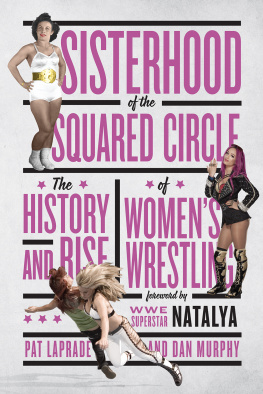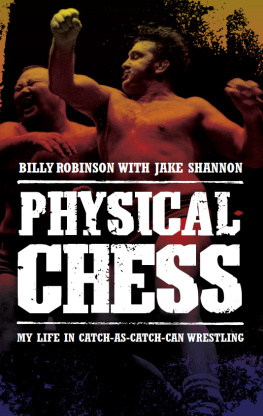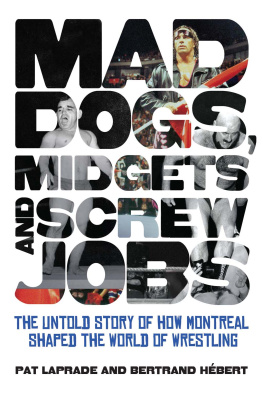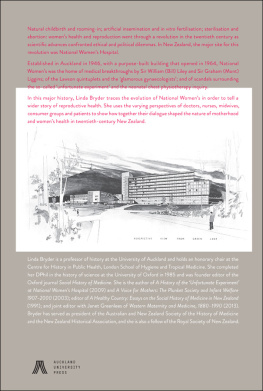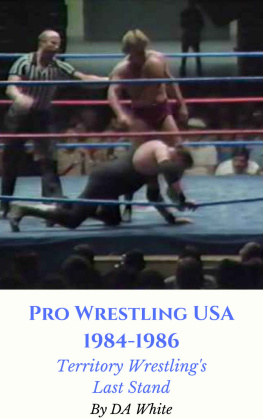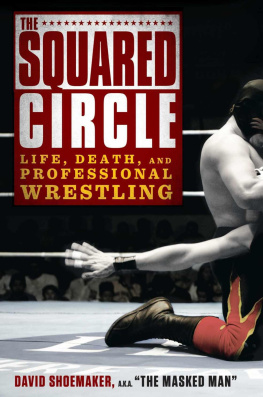Not a day has gone by when I havent thought of or spoken about wrestling. My grandfather, Stu Hart, had so much passion for wrestling that when he was a young man he hitchhiked to Ottawa to become the amateur wrestling champion of Canada. Many didnt know that at the time, Stu was homeless.
Stu would later open up western Canada to professional wrestling, with the biggest stars performing there. But there were also women who wrestled for my grandfather.
In the late 50s it was Johnnie Mae Young. In the early to mid-60s there were Penny Banner, Lorraine Johnson, Marva Scott, Ethel Johnson, June Byers, Fabulous Moolah, Bette Boucher, and Princess Little Cloud. In the 70s there were Marie Vagnone and Susan Green. In the 80s there were Wendi Richter, Joyce Grable, Velvet McIntyre, Judy Martin, Rhonda Sing from Calgary, Debbie Combs, and a couple of pretty famous Japanese girls, Devil Masami and Chigusa Nagayo.
Professional wrestling has always been the backdrop of my life. I grew up in this very crazy world with some of the most unique people on the planet. There was never a dull moment in our house... And there was always Gene Okerlunds voice in the background on our TV.
Once I started training with my uncles in my grandfathers basement a.k.a. the infamous Hart Dungeon I was hooked. It was so much fun and a great outlet to be creative and escape reality. Wrestling is a form of self-expression; its an art.

Natalya and her uncle Bret, from the famous Hart family.
NATTIE NEIDHART COLLECTION
Five years later, after wrestling in Canada, Japan, Europe, and the United States, I was hired by WWE. I was so grateful I had been able to learn and work with so many awesome women, like Sara Del Rey, for example. But I couldnt believe I was actually going to work for the company I grew up watching my dad and uncles wrestle for. It felt like a dream to work for WWE. I almost forgot how to do a headlock I was so damned excited. The butterflies never went away. I realized I liked those butterflies, especially before each match, because they told me I was living my dream.
I have shared the stage with so many strong women. I feel proud of every match Ive ever had, even if some of them left me in tears for all the wrong reasons. Ive grown so much from the bumps, bruises, and trainwrecks as well as the rare moments of glory where I felt like I was floating and no one could touch me.
In wrestling, as in life, you fall down and you have no choice but to get back up and keep fighting. There are no victims only survivors who live to tell their stories. And what grand stories they are. Some of the greatest survivors are women.
Girls like Beth Phoenix taught me so much about inner strength. The Bellas taught me to embrace my inner beauty when I didnt always feel so beautiful. In Charlotte Flair during our infamous 2014 NXT TakeOver match, I learned so much about myself. She was a girl who, like me, felt she couldnt fill her familys big boots. What she later realized mattered most was blazing her own legacy.
Because of all the things Ive learned from wrestling, I feel like theres nothing I cant conquer. Im happy so many women of the next generation are also going to experience this surge of strength.
Only a handful of women on the planet can do this and Im damned proud of that.
Id like to thank my dear friend Dan Murphy and his coauthor, Pat Laprade, for asking me to be a part of this book. Thank you, Dan, for believing in me and womens wrestling for all these years. You rock.
Nattie Neidhart
#womenswrestling
It all started in the carnivals. You had the bearded women. You had the clowns. You had the feats of strength. And then there were the wrestlers who would take on (and defeat) anyone from the crowd. Sometimes, that wrestler happened to be a woman. And most of the time, she could beat a man in a heartbeat.
By the 1930s, womens wrestling had graduated from the carnival sideshows to popular (albeit often controversial) attractions presented alongside mens matches. For some adventurous women, professional wrestling was a way to travel, to earn money, and to live a life of excitement. These women wanted something different from settling down, starting a family, and doting on a husband who brought home the bacon.
There were perks to a wrestling life. Some women were able to see the world, from Los Angeles to New York, Paris to Tokyo, and all points in between. But it was also a life filled with unscrupulous promoters, some of whom felt entitled to sexual favors in exchange for presenting womens matches on their cards, always trying to pay as little as possible. It was a world of backstage politics and squabbles, of constantly moving from town to town, and of perpetual aches, pains, and injuries.
It wasnt just a job. It was a vocation, a lifestyle that was completely different from the norm. It was a profession that presented women as major-league athletes and entertainers at a time when a womans place was supposed to be in the home.
In the 40s and the 50s, Billy Wolfe, Mildred Burke, and the Fabulous Moolah helped womens wrestling expand into an international attraction. The advent of television turned wrestlers both male and female into TV stars, bringing them out of the arenas and into viewers living rooms. If this was the golden era of womens wrestling, the next two decades werent. But when Vince McMahon Jr. broke all of wrestlings unwritten rules and took his World Wrestling Federation national in the mid-1980s, he put womens wrestling once again in the forefront, turning a shy young girl named Wendi Richter into a household name.
That didnt last long though, and with an edgier product on its way, the presentation of womens wrestling in the 1990s changed a great deal. Women were presented purely as sex objects, competing in bra and panties matches or other novelty matches designed to show as much skin as possible, an act womens wrestling still has trouble getting rid of today. At the same time, in Japan and on the indies, womens matches outshone the men at times, and women displayed unmatched athleticism, intensity, and showmanship. The new millennium brought a mix of all this, with women being portrayed as divas or being part of a revolution.
This is a look at the history of womens professional wrestling, from the carnivals to that so-called womens revolution. Its a look into the lives of some remarkable women whose dedication, talent, and hard work have made a lasting impact on the world of wrestling women who struggled hard to be more than just an attraction or a novelty act.
Vince McMahon once approached Trish Stratus backstage and complimented her on her match. Stratus pantomimed dialing a phone and said, Hello, 911? Id like to report a robbery. It looks like the women have stolen the show. Thats what this book is all about. Womens wrestling, finally rising back to its rightful spot: in the main event.

